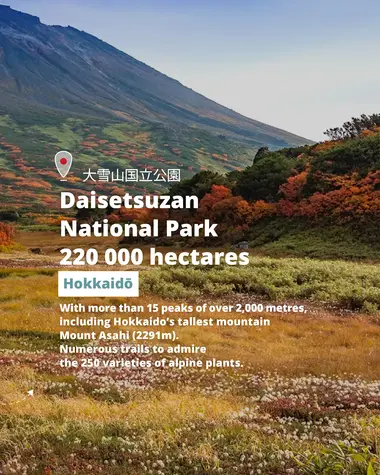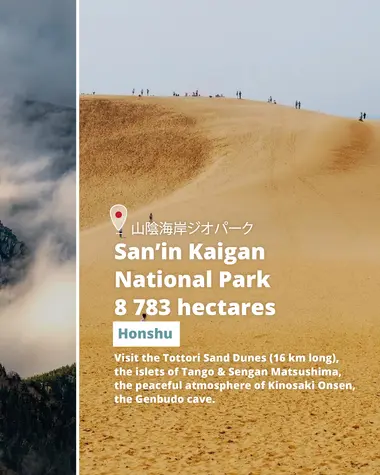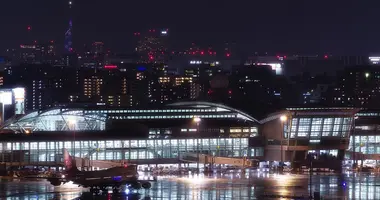Japan's national parks 国立公園
- Published on : 24/06/2019
- by : S.R.
- Youtube
Incredibly diverse wildlife
Japan is an archipelago of volcanic islands which extends over more than 3000 kilometers from the Russian coast to the island of Taiwan, creating a great diversity of landscapes that have been classified into as many national parks. Discover the incredible wealth of the Japanese landscape!
The National Parks Act
The Law on National Parks, instituted in 1957 by the Japanese Diet, aims to protect the landscapes and ecosystems of natural parks and to promote them to the population. It establishes three main categories of natural parks:
The national natural park: there are currently 31 of them in Japan, in all the major regions of the country. This category includes parks with the most remarkable landscapes, such as Nikkô National Park.
The quasi-national park, of which there are 56 in the country. These are landscapes that are just as remarkable but whose importance is regional (they are notably smaller in size). Akiyoshidai Quasi-National Park belongs to this group. It is the Japanese prefecture that asks the ministry to classify a quasi-national park.
The prefectural park: a natural area that is important at the level of the prefecture. There are 315 in Japan.
These parks form a set of landscapes so different that it sometimes feels like changing countries by visiting a new park. We thus find:
Daisetsuzan Park in Hokkaido
Daisetsuzan Park, which means "big snow-capped mountains", is located right in the middle of the island of Hokkaido. It is the first place in the archipelago where the maple leaves turn red in autumn to give the momiji and where the winter snows come to fall.
With rare species now only thriving in this park and most of the country's last remaining brown bears, the park is a true piece of Nordic wilderness grafted into the midst of Japanese modernity.
Mountainous Japan, or Chubu Sangaku Park
Chubu Sangaku National Park is located, as its name suggests, in Chubu Province, in the middle of the northern Japanese Alps. Many peaks in the park exceed 3000 meters in altitude, among which we can mention Mount Hotaka or Mount Tate. The horizon is swollen with escarpments offering a landscape made up of ravines, gorges, and valleys.
Tottori Desert: San'inkaigan Park
Japan has such a rich nature that there is even a desert! The Tottori dunes stretch for 16 kilometers along the coast of the Sea of Japan in Chūgoku. Present on the archipelago for nearly 100,000 years, it is the only dune system in Japan. The exoticism, already very present, becomes total when you ride a camel there, like during an expedition in the Sahara!
- Read also: The island of Izu Oshima
The dream islands of Kerama
The Kerama Islands belong to the Okinawa archipelago. With its azure water and its white sandbanks, the Japanese do not need to go to the Maldives to spend a dream vacation! The tropical paradise side of Kerama National Park is accentuated by the presence of corals at the edge of the beaches that can be admired while snorkeling.
Where to do the most beautiful hikes in Japan? Discover the national parks of the archipelago.
- Mount Tsurugi Quasi-National Park
- Ise-Shima National Park
- Daisen Oki National Park
- Nikko National Park
- Kujukushima National Park
- Kirishima-yaku National Park
- Akiyoshidai Quasi-National Park
- Bandai Asahi National Park






























